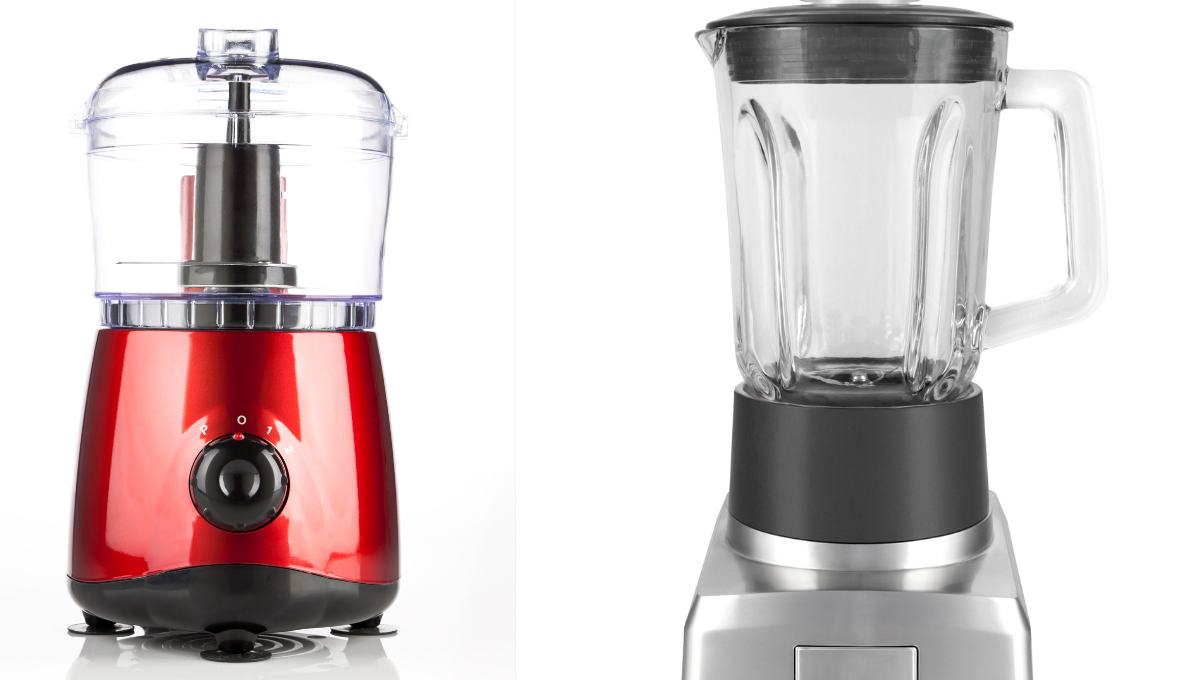Though these appliances food processor and blender have a similar appearance and function, they serve different purposes, so it’s good to study each one before purchasing. The parts that these two appliances are meant to execute are the most significant distinction between them: Blenders are meant to pulverize and mix (in other words, blend) wet and dry components, whereas food processors are designed to conduct a wide range of food preparation operations. We go through what makes each gadget unique in more detail below.
What Is a Food Processor?
A food processor is a multipurpose electric device that may be used to make a wide range of dishes. A food processor can rapidly perform various jobs, from chopping to shredding to making dough.
A base, a transparent plastic body, a pair of replaceable blades, and a cover are the four main components of a food processor. The velocity and pulse controls are positioned on the base of food processors. A food processor’s vast and expansive body allows it to accept more extensive recipes.
What Is a Blender?
A blender is an electric device that is ideally suited for mixing solid items with liquid ones, as its name suggests. Blenders contain four parts, similar to food processors: a motorized base, a pitcher, a set of (often replaceable) blades, and a cover. The controls on the bottom of a blender might include speed and mix parameters. Most blender pitchers are roughly spherical, having handles and pouring spouts.
WHEN SHOULD YOU USE A HIGH-SPEED BLENDER?
Blending
Vitamix is a high-powered blender designed for professionals. If you stroll into a smoothie bar or a coffee shop, you’ll undoubtedly see a Vitamix blender producing the drink you crave. This machine can crush almost anything you throw at it.
Grinding
You use a regular blender to grind nuts, seeds, legumes, and grains into flour. You might be able to accomplish that, but it will take a long time and leave you with a lot of “mealy” texture to filter out. Most blenders, moreover, aren’t designed for grinding.
Crushing
As a kid, do you recall having shaved ice (also known as snowballs or snow cones)? The same texture as dot ice cream — little, irregularly sized ice chunks that stay together when placed in a single container.
WHEN SHOULD A FOOD PROCESSOR BE USED?
Slicing, chopping, grating, shredding
A food processor is ideal for tasks that involve a lot of chopping, grinding, or shredding. Consider cauliflower risotto, coleslaw, breading, or shredded cheese. In a way, the Vitamix can chop. However, we find the food processor outcomes to be far more consistent.
Kneading
While blenders are great for aerating pastry mixtures, the blades of a food processor are what give bread, pie crusts, and biscuits their muscular structure. Of course, because of the size of the bowl, if you’ve had a KitchenAid mixer, you’ll likely prefer it. On the other hand, your food processor can precisely knead the dough for almost anything you wish to bake.
Mixing
When you need to combine (blend) anything but don’t want the end product to be smooth, a food processor comes in handy. Pesto, chunky salsa, handmade energy balls, and snacks are examples.
Conclusion
Food processors are must-have kitchen equipment for bakers and chefs, while blenders are more versatile and may be used to make smoothies, soups, and creative drinks. These gadgets, however, are not mutually incompatible. You’ll likely need both types of equipment in your kitchen.
